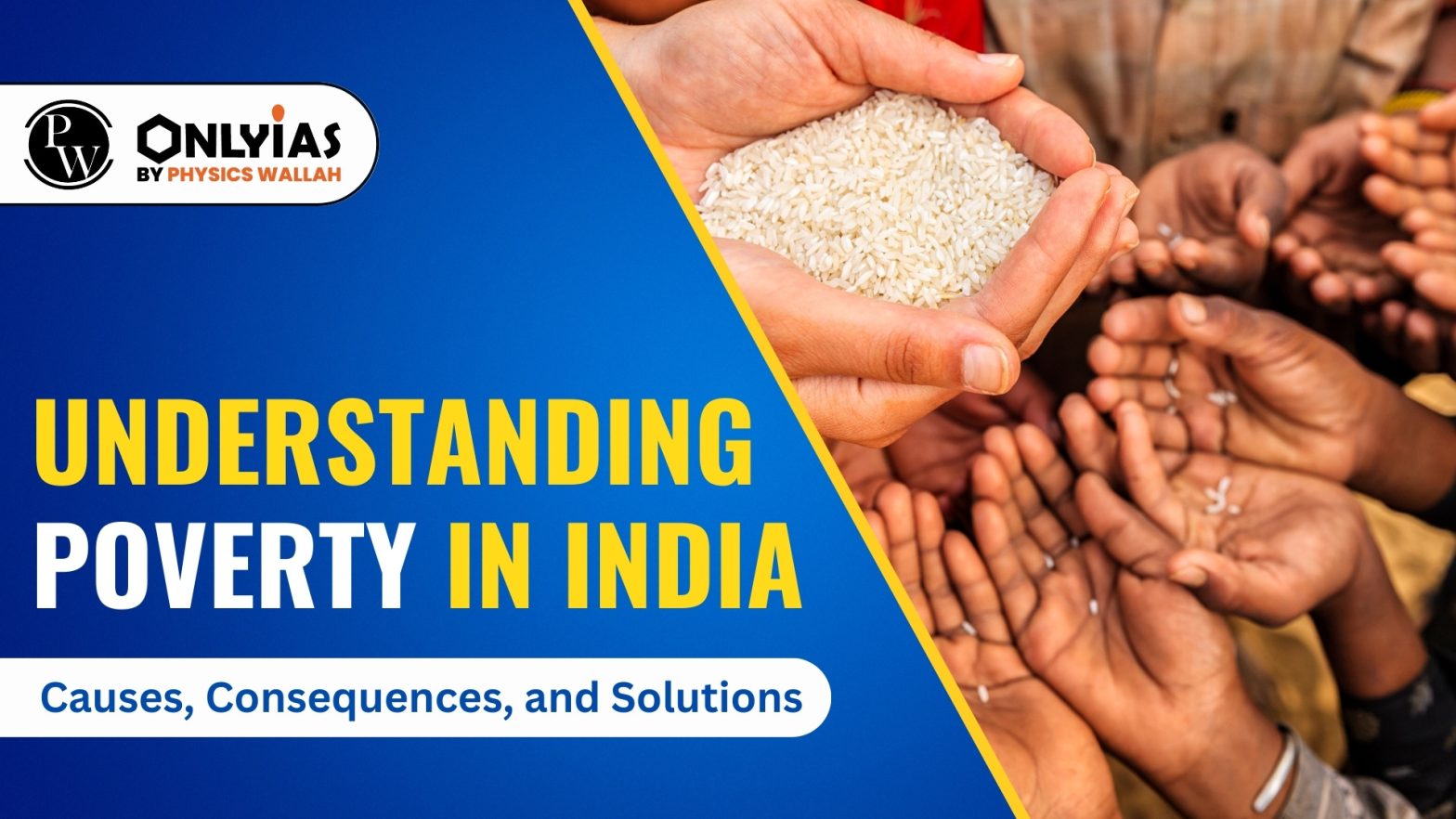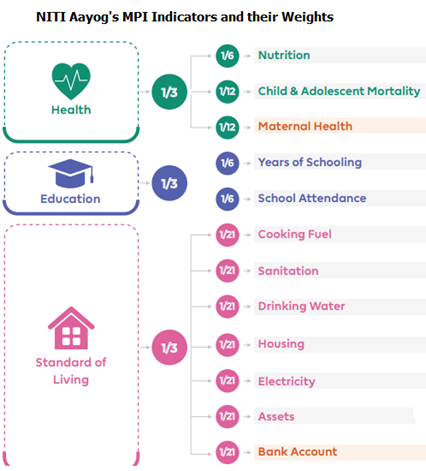Recently, Prime Minister Narendra Modi said more than 13.5 crore Indians had escaped poverty in India in the last five years.

Poverty in India remains a critical socio-economic issue with complex causes and far-reaching consequences. The estimation of poverty is primarily done through consumption-based methods by government bodies like NITI Aayog, using data from national surveys. Causes range from lack of education, unemployment, and unequal resource distribution to social disparities. Poverty leads to poor health, limited access to education, and reduced quality of life. Various government schemes and policy solutions aim to alleviate poverty by improving income opportunities, social welfare, and access to basic services.
Poverty estimation in India is primarily based on consumption expenditure levels rather than income, as consumption patterns are considered more stable and reliable. The government uses data from the National Sample Survey Office and the Household Consumption Expenditure Survey to calculate the poverty line. Various methods, including the Mixed Reference Period approach, are used to capture accurate consumption across different goods and services. Estimations also consider purchasing power parity and adjustments for inflation, helping to reflect real poverty levels more effectively.
Several expert committees have been constituted over the years to improve poverty estimation methods and provide policy recommendations. These committees have played a vital role in shaping India’s poverty measurement approaches, addressing shortcomings in earlier methods, and suggesting adjustments based on changing consumption patterns and socio-economic factors.
| Committees on Poverty in India | ||
|---|---|---|
| Committee Name | Years Active | Key Contributions |
| Tendulkar Committee | 2005-2009 | Revised poverty lines by incorporating changes in consumption and inflation, factoring private health and education spending. |
| Rangarajan Committee | 2012-2014 | Proposed a survey-based approach using household savings and spending patterns for poverty estimation, linked poverty line to welfare programs. |
| Multidimensional Poverty Index (MPI) Committee | Since 2021 | Developed an index capturing overlapping deprivations in health, education, and living standards aligned with UNDP’s global MPI model. |

| Factors | Description |
| Historical Factors For poverty in India |
|
| Economic Factors |
|
| Social Factors |
|
| Political Factors |
|
| Climatic Factors |
|
Poverty affects every sphere of life. By linking poverty with the Sustainable Development Goals (SDGs), we can better understand the effects of poverty in India.
| Initiatives | Description |
| Mahatma Gandhi National Rural Employment Guarantee Act (MGNREGA) |
|
| National Rural Livelihood Mission (NRLM) |
|
| Pradhan Mantri Jan Dhan Yojana (PMJDY) |
|
| Pradhan Mantri Ujjwala Yojana (PMUY) |
|
| Pradhan Mantri Awas Yojana (PMAY) |
|
| Pradhan Mantri Mudra Yojana (PMMY) |
|
| Skill India Mission |
|
| Stand Up India |
|
International Day for the Eradication of Poverty
|
Check Out UPSC CSE Books
Visit PW Store
| Must Read | |
| NCERT Notes For UPSC | UPSC Daily Current Affairs |
| UPSC Blogs | UPSC Daily Editorials |
| Daily Current Affairs Quiz | Daily Main Answer Writing |
| UPSC Mains Previous Year Papers | UPSC Test Series |
The official poverty line in India is based on the Tendulkar Committee's recommendations and is set at ₹27.2 per day in rural areas and ₹33.3 per day in urban areas.
Challenges include high population growth, income inequality, inadequate access to education and healthcare, and the need for sustainable job creation.
Historical factors like colonial exploitation, economic issues such as income inequality and unemployment, social factors like the caste system, and climatic factors like droughts and floods contribute to poverty.
Education is a key tool for poverty reduction as it empowers individuals with skills and knowledge, improving their employability and income-earning potential.
The COVID-19 pandemic has had a severe impact on poverty, pushing millions of people into poverty due to job loss and economic disruptions.
<div class="new-fform">
</div>
